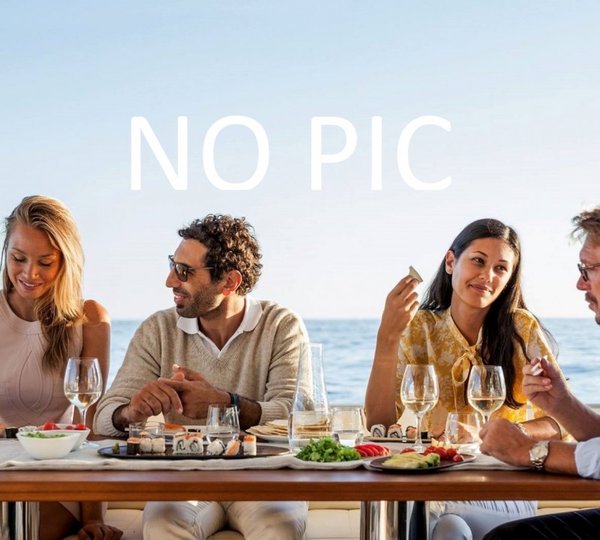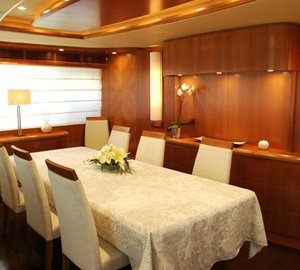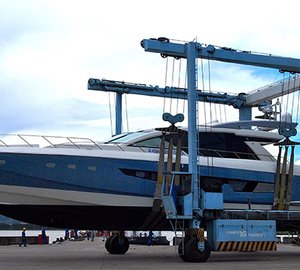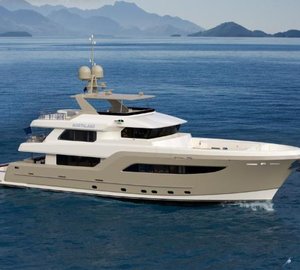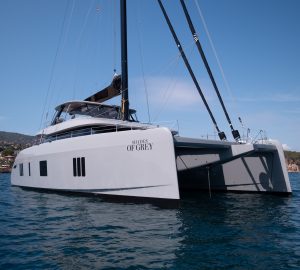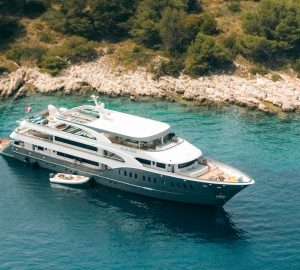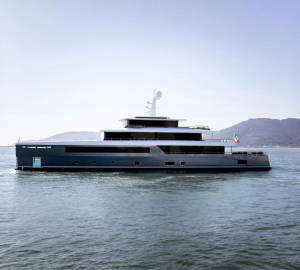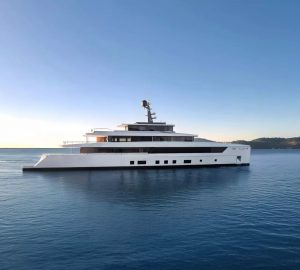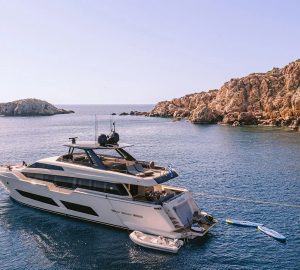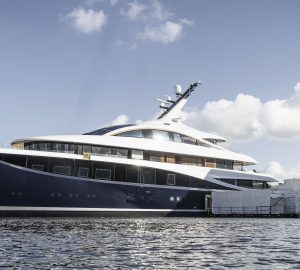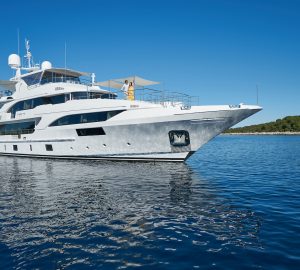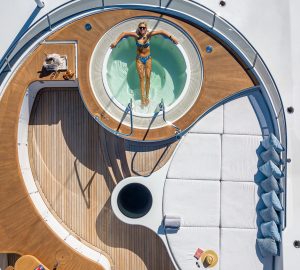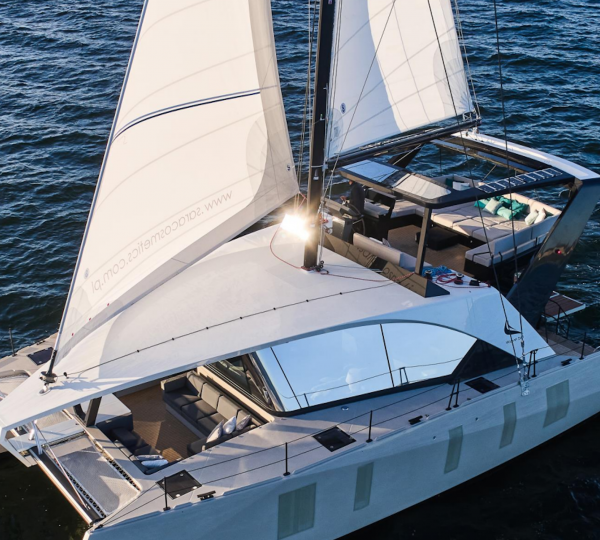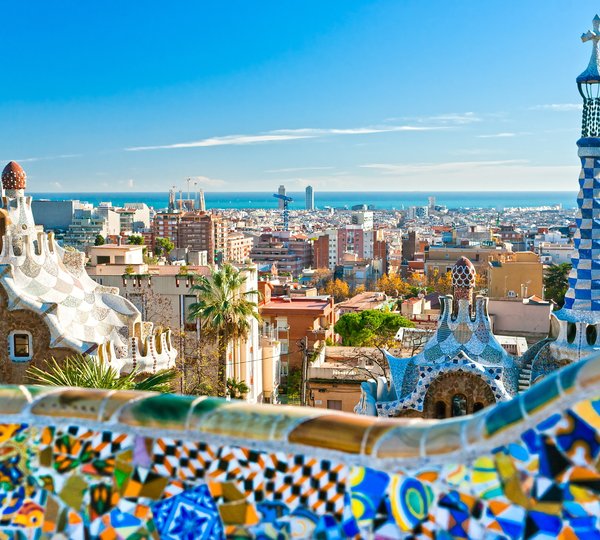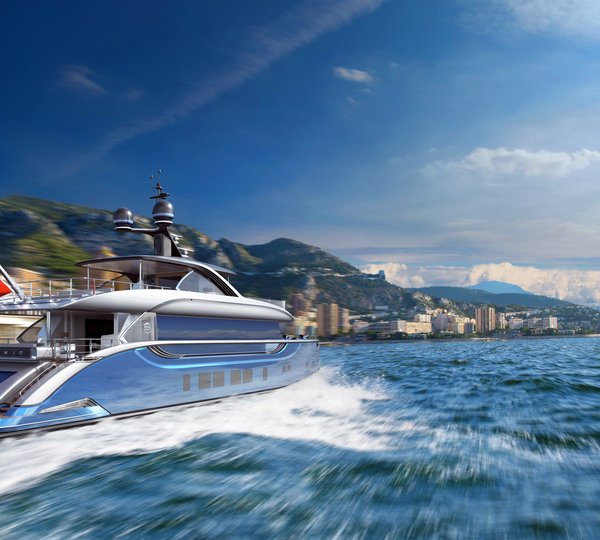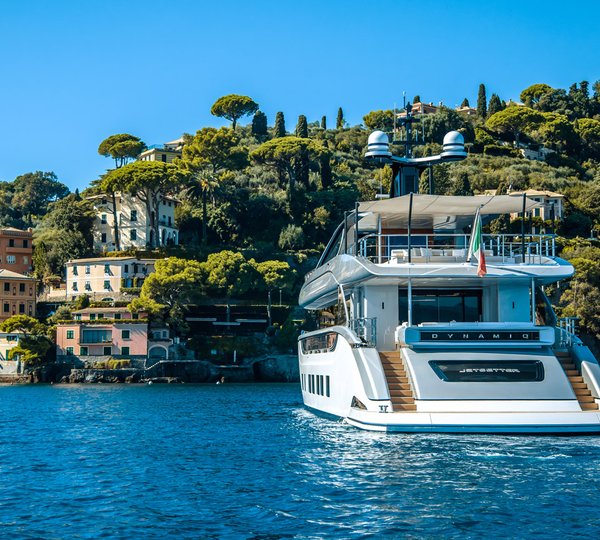Luiz de Basto is pleased to introduce his latest 55m motor yacht Quartz concept. The magnificent Quartz yacht concept has been developed to provide a luxurious and exclusive yachting experience of maximum visual and physical contact with the water as well as nature. In order to achieve that, some old pre-conceived ideas about how a yacht looks like needed to be challenged.
Luiz de Basto was interested in exploring the relationship between the hull and superstructure and avoid the generic look we see in so many yachts today. However, to him yacht design is never a matter of style, it’s a matter of architecture and technology working together seamless, achieving the type of results we can appreciate on a samurai sword or an iPhone. With this approach in mind there’s no space for the cosmetic or superficial, everything has a function to fulfill, or even two, and its beauty comes from the correct use of technology.
Glass technology for instance. Today it’s possible to use this material in the nautical world in ways not obvious just a few years ago. As opposed to other previous designs that Luiz de Basto developed using curved glass, this time he has decided to use high performance flat glass in order to lower the cost, engineering and construction time, and use some existing off the shelve products available today.
For instance, the use of double glazing with an air cushion separating the glass panels and the insertion of venetian blinds in the gap to control the light and privacy. A metallic film is applied to the glass layers to reduce glare and UV penetration and with thermal proprieties that reduce the heat for more than 65%. In addition, radiant walls and floors can be used for heating and cooling. Also the use of privacy glass which can be dimmed, allows for a total control of AC loads and privacy.
So why not make floor to ceiling outside walls like in the modern skyscraper and residences? That’s how the upper deck volume was created, with its pavilion like shape, which then was suspended from the deck to provide for a wave breaker in the front. Then using the gap for natural light, creating an upper window below in the main deck was a natural result, which increases the headroom below to 3 meters (10 feet) completely unusual on yachts of this size or even larger. This upper window runs all the way around under the pavilion, going from the main salon to the owner’s stateroom in the front area, below the pilot house.
The pilot house windshield uses structural glass and also goes from floor to ceiling, with the console designed as a piece of free standing furniture, placed exactly where the headroom becomes too low for standing. Two doors on each side provide access to the crew.
The side glasses are mounted on tracks and, combined with handrails placed on the inside, can slide to create balconies. The aft deck, thanks to this feature, can be completely enclosed for protection on a windy day or completely open.
Because the shaded area is part of the raised pavilion, the difference in level creates a natural separation and layout organization for the upper aft deck.
From the upper aft deck, two stairways on each side lead up to the covered flybridge, with handrails also in glass. A bar is placed just forward of the mast and a relaxing seating area is in the front, to enjoy the sun and views during navigation.
The base of the mast encloses a day head and is the support for a suspended roof overhanging in all directions, like a giant umbrella, with no pillars around the perimeter to spoil the views.
Also from the upper aft deck, two stairways lead down to the main aft deck.
Luiz de Basto believes all this features are already interesting enough to define a rather striking design and achieve views in all directions. However, a close physical contact with the water was still missing, so using my previous experience with a smaller design, the 63′ Top Deck now in construction by Astondoa in Spain, he decided to apply that concept on a larger size and make the aft deck to open completely with hinge down panels. Under navigation the transom is completely enclosed, no swim platform or stairways, a good security feature on itself, but upon arrival at your destination, it can be completely flipped down to be used as a deck and revealing the stairways for normal use.
Moreover, the aft sides of the hull can also be flipped down as well to reveal a beach club, from port to starboard. This provides a unique living space at the water level. To increase even more the additional space the flip down panels include the bulwark above leaving behind, when open, a fixed handrail installed separately. Of course the beach club area is completely waterproof and can also be used to store water toys, such as jet skies, kayaks, small sail boats, etc. The transom and fold down panels combined extend the deck areas by 65 sq meters or 700 sq feet when open. Any of them can be used as a deck space or embarkation areas, stairways are provided on each side.
The tender garage is located forward, right below the swimming pool on the fore main deck which is also covered by teak panels when not in use. The garage has door on both sides which open upwards, it’s partially divided by the pool and can accommodate a 6.5 meter tender and 3 large wave runners. Worth of mention is the service stairway that runs just forward of the garage, from the main deck recessed fore area with the anchor windlasses to the lower deck crew area. With this feature there’s a complete separation between crew and guests and a safe operation is guaranteed.
The current layout provides four staterooms down below with discreet access to the crew, with the owner’s on main deck forward just aft the garage. Galley is also on main deck port side with direct access to the crew down below.
The overall result is a striking different look combined with cutting edge technology but perfectly feasible yacht with a cost not to exceed conventional designs of the same size, however to be built only by a very experienced and capable yard. No doubt the amount of glass and movable parts are a demanding engineering challenge but that’s what sets this design apart and that’s exactly what can provide a luxurious yachting experience to a very special owner and his happy family.
After developing the concept and looking for a name Luiz de Basto thought Quartz to be a perfect one. Although the hull shape and configuration look normal at first sight, they are not as we just saw, the upper deck is a geometric shape wrapped in glass that reminds a quartz crystal for its edges and transparency.
On a final note, it’s of course possible to apply the 55m Quartz superyacht design and its features to a smaller or larger size.

